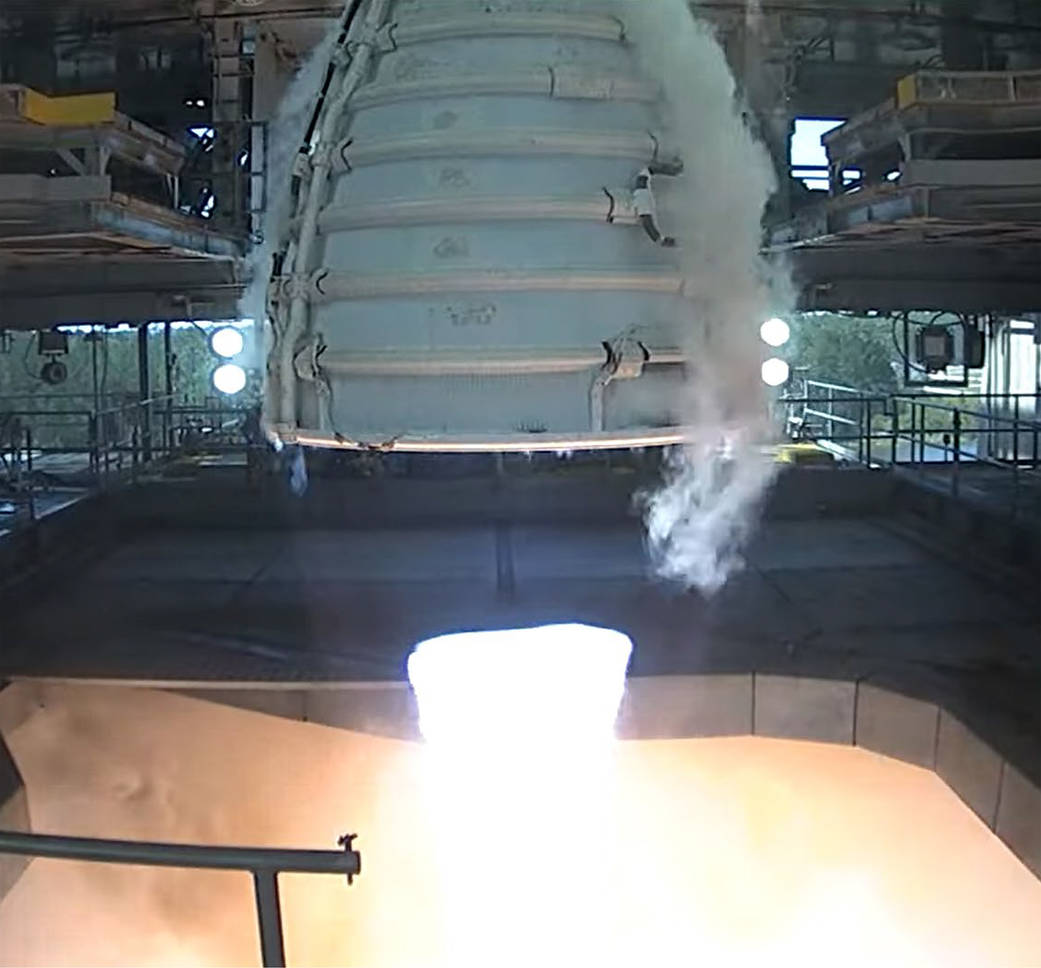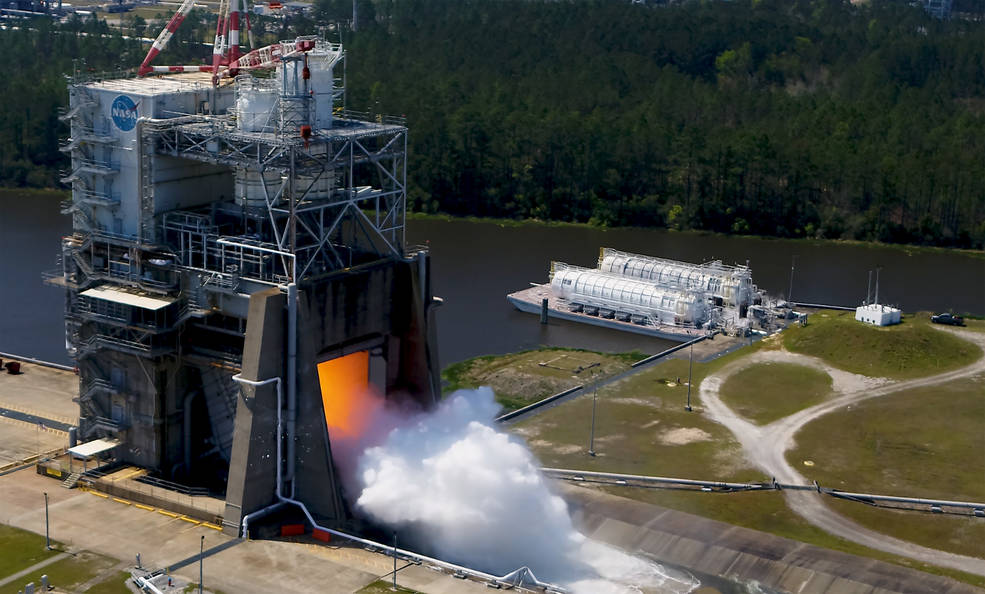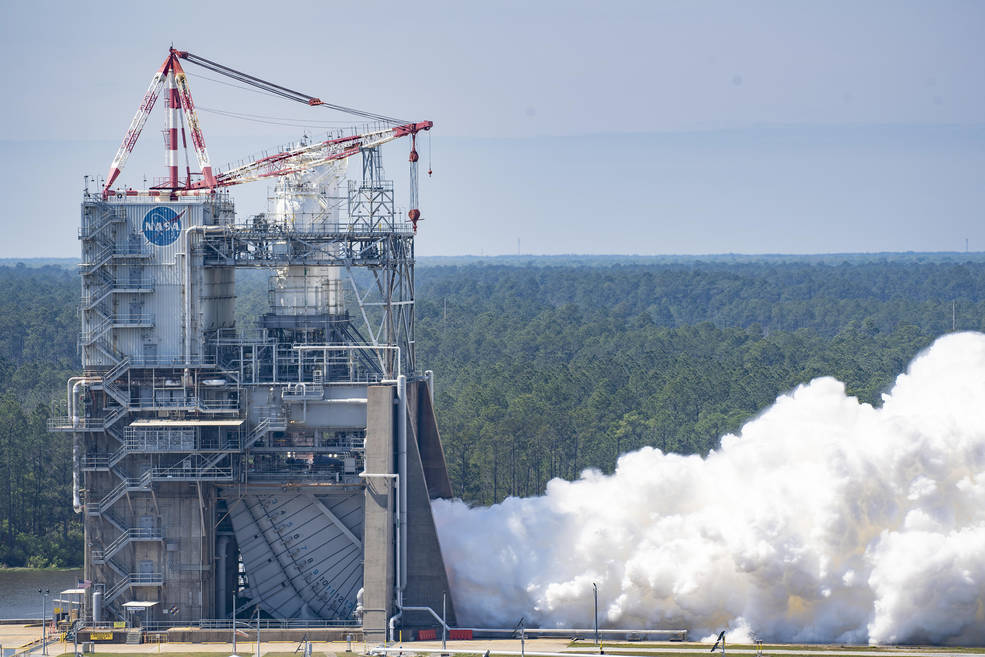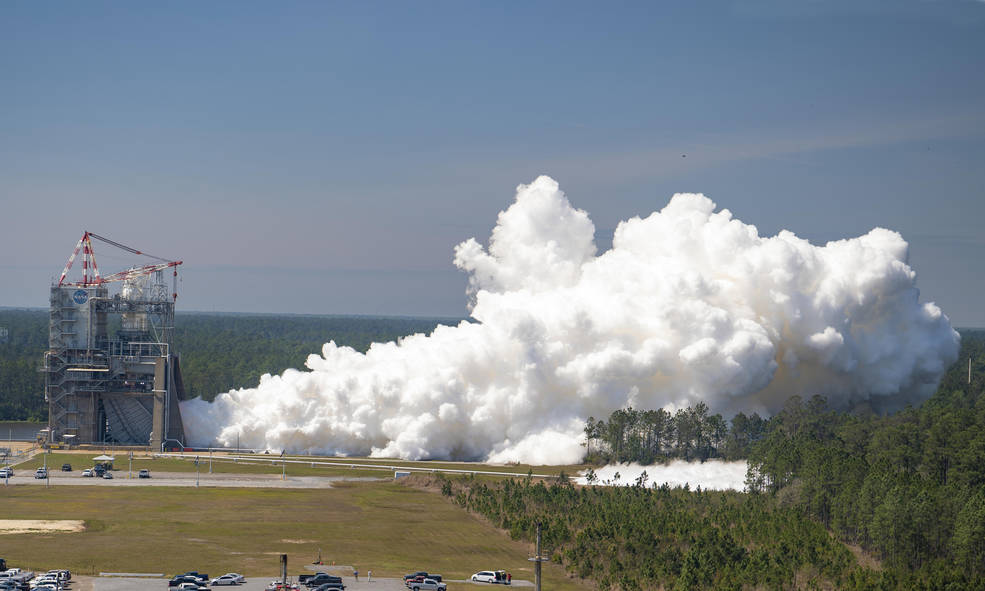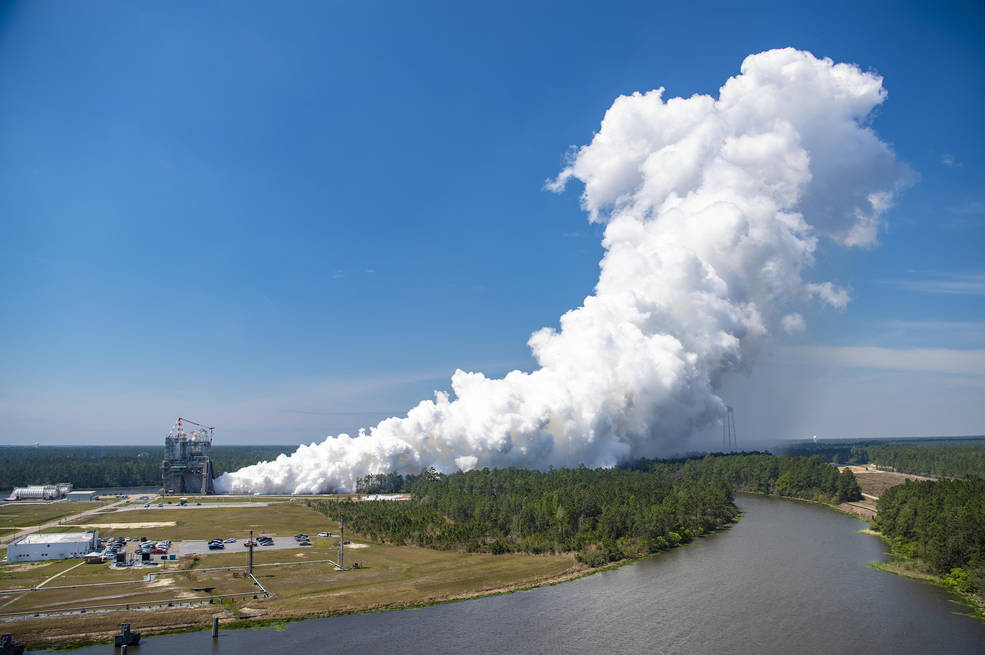NASA conducted a long duration hot fire of an RS-25 certification engine March 21, continuing a key series of testing to support future Space Launch System (SLS) missions to deep space as part of Artemis missions as the agency continues to inspire the world through discovery.
Operators fired the certification engine for 10 minutes (600 seconds), longer than the 500 seconds engines must fire during an actual mission, on the Fred Haise Test Stand at NASA’s Stennis Space Center near Bay St. Louis, Mississippi. Operators also fired the engine up to 113% power level, exceeding the 111% level needed during SLS launch. Hot fires of longer duration and higher power level allow operators to test the limits of engine performance and provide a margin of safety for flight operations. The March 21 hot fire was the fourth test in a series that began in early February to certify production of new RS-25 engines by lead contractor Aerojet Rocketdyne. The company is using advanced manufacturing techniques, such as 3D printing, to reduce the cost and time needed to build new engines for use on missions beginning with Artemis V. Four RS-25 engines help power SLS at launch, including on its Artemis missions to the Moon.
Through Artemis, NASA is returning humans, including the first woman and the first person of color, to the Moon to explore the lunar surface and prepare for flights to Mars. SLS is the only rocket capable of sending the agency’s Orion spacecraft, astronauts, and supplies to the Moon in a single mission.



























